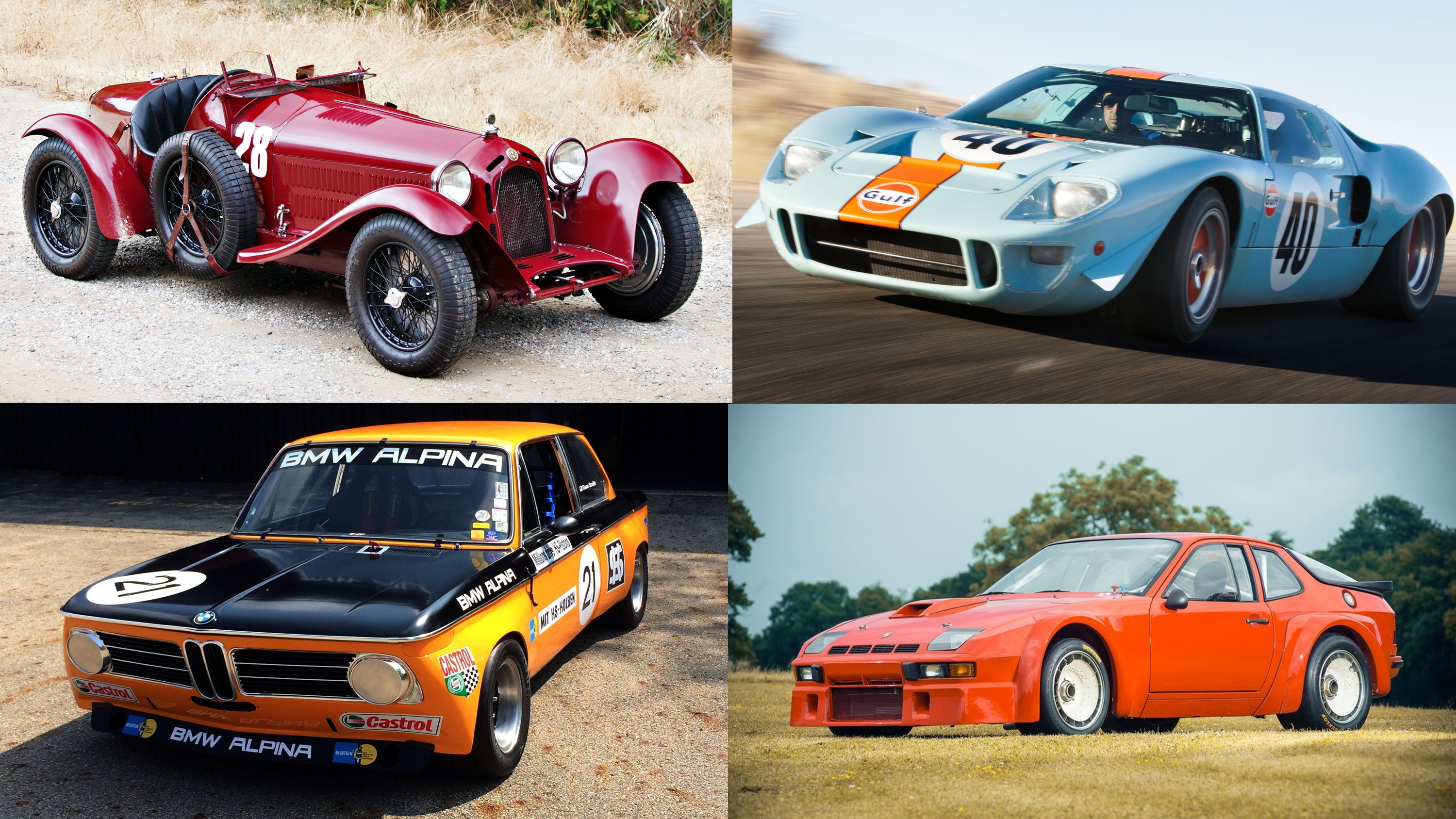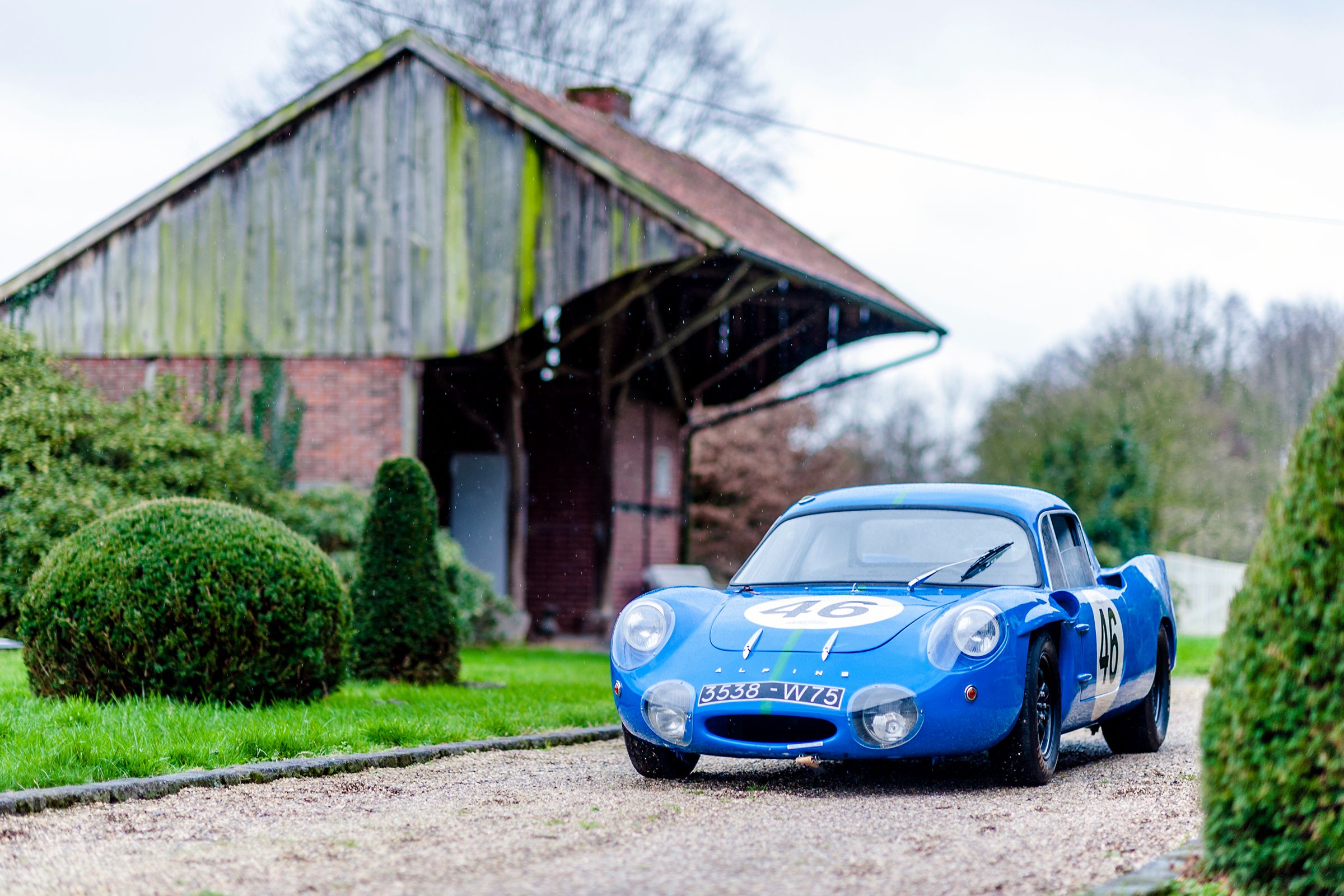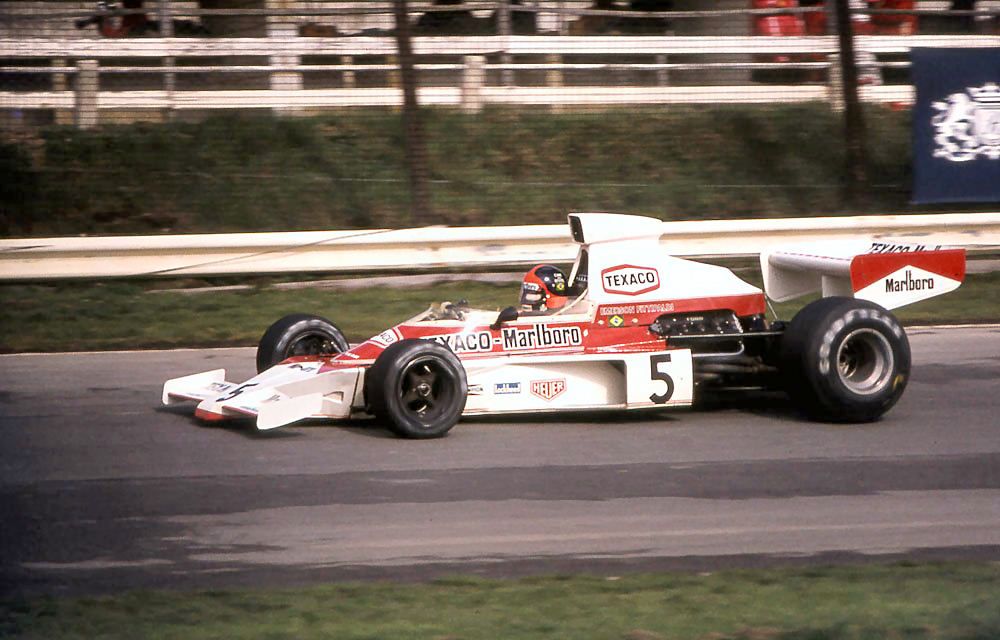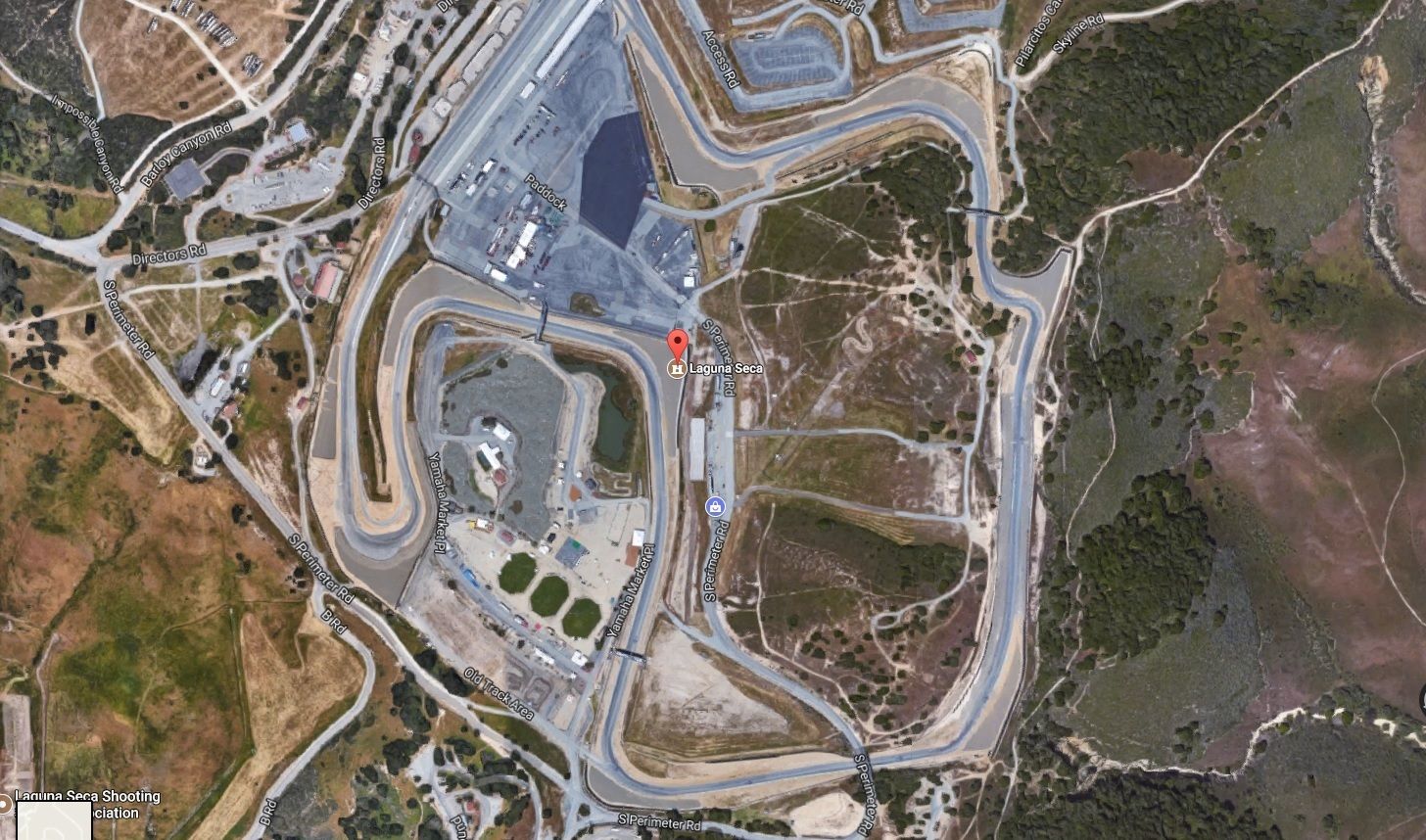I’ll take any excuse I can to head out to Laguna Seca. Simply walking around this incredible ribbon of California tarmac is enough to send chills up and down my spine. Throw in a collection of iconic race cars doing hot laps, and I’m one very happy camper. Do it for four days straight, with a rotating variety of run groups, plus Q&A and autograph sessions with legendary racing personalities and tons of delicious food, and I’d call it pure gearhead bliss. This is the formula for the Rolex Monterey Motorsports Reunion, the place where the racing of Monterey Car Week all goes down. As the uber-epensive collectibles roll across the block at auctions like Mecum or Russo & Steele, and the show judges scour a field of pristine classics at the Concours d’Elegance, Laguna Seca plays host to hundreds of hardened competition machines doing what they do best – going fast.
As in years past, the 2017 rendition of the Reunion will bring together a vast collection of four-wheeled heroes, from a 1911 National Speedway, to a 1989 Mazda 767-B. In fact, there’s so much automotive goodness on hand, the event has been dubbed the “rolling museum.” We’ll be there to capture the action, but before we get there, here’s a preview of what to expect.
Continue reading to learn more about the 2017 Rolex Monterey Motorsports Reunion.
The Cars
For 2017, the Reunion is once again offering up 15 individual run groups, with entries plucked from 80 years of racing history. This year, the event is honoring the 60th anniversary of Formula Junior, the 60th anniversary of Mazda Raceway Laguna Seca, and the 70th anniversary of Ferrari.
We’ve combed through the entry list (check it out for yourself here) to find some of the more interesting cars headed for the central coast and listed them below. Give ‘em a look, and let us know which ones pique your interest the most in the comments.
1930 Morgan Super Aero
That’s right – this British three-wheeler is indeed tackling the technical Laguna Seca racetrack. Stuck halfway between a motorcycle and a tiny roadster, the Morgan mounts two wheels in front and a single wheel in the rear, cutting out a ton of weight and complexity in the process. The unique configuration was originally offered as a means of bypassing certain British road taxes, but the end result is a thrilling little track car similar to a modern day Ariel Atom or KTM X-Bow (minus a wheel, or course).
1932 Alfa Romeo Monza
The 1932 Alfa Romeo Monza is, without a doubt, one of the most recognized and celebrated classic race cars of all time. Designed and built for competition, the Monza name was attached to the 8C 2300 following its victory at the Italian Grand Prix in 1931. With an inline eight-cylinder (“8C”) engine rated at 2.3-liters (“2300”) of displacement, this stout little performance machine brought the noise at such famous races as the Mille Miglia and Targa Florio, and now it’s headed to California to take on Laguna Seca.
Read our full review on the 1932 Alfa Romeo Monza.
1962 Elfin Formula Junior
The Formula Junior race series was an open wheel class that pitted up-and-coming drivers against one another utilizing relatively low-cost parts and racing machines, allowing a little bit of wiggle room for inexperienced racers to show what they’ve got without the heavy financial burden of running a top-tier single-seater. Parts were taken from various production vehicles, and the result was an effective bridge to a professional career. The Monterey Motorsports Reunion is celebrating the series with several Formula Junior entries on this year’s list.
1964 Alpine M64
Founded by Jean Redele in 1955, Alpine’s primary focus was creating a faster 4CV, campaigning around the world at a variety of venues and events. Following these modified streetcars was the A106, which used 4CV components and quickly helped spread the Alpine name. The M63 and M64 followed, models specifically designed for the rigors of sports car racing. Only three examples of the M64 were built, and one of these long-tail bubbly machines will make it to Monterey for the Reunion. Specs include a rear-mounted four-cylinder engine producing roughly 115 horsepower, a five-speed manual transmission, independent suspension, and four-wheel disc brakes.
1966 Ford GT40
This is one Blue Oval that shouldn’t require an introduction, but just in case you’ve been living under a rock for the last 50 years or so, here’s the story. Back in the ‘60s, following a soured business deal between Ford and Ferrari, Henry Ford declared his intention to take the fight to the Prancing Horse at the 24 Hours of Le Mans. To beat the Italians, Ford spared no expense in developing a world-class racing machine capable of ousting the dominant Ferrari racing team. After spending millions and enduring several embarrassing defeats, Ford finally hit the nail on the head with this – the legendary GT40. This is the genesis of the modern Ford GT, and it should provide a helluva soundtrack at Laguna Seca.
Read our full review on the 1966 Ford GT40.
1970 BMW Alpina 2002 ti
With its quirky, boxy styling, plus plucky, compact dimensions, the BMW 2002 is most definitely a fan favorite at Laguna Seca. This is an enthusiast’s car through and through, with a distinct history and a special breed of devoted followers. And although it’s lacking in straight-line speed, the 2002’s low curb weight (less than 2,000 pounds when properly stripped out) and well-sorted chassis bless it with an ability to out-turn its heavier, V-8-powered competition.
After its release, racers looking for more from their 2002 would turn to Alpina, a turning company offering a catalogue of go-faster stuff, such as new Weber side-draft carburetors, alloy wheels, and extra tire in the corners. Providing the go is a 2.0-liter four-cylinder producing as much as 220 horsepower at an impressive 8,000 rpm. Older folks out there will remember the 2002 from the golden years of SCCA Trans Am racing, and should get a kick from hearing that 2.0-liter flying around the track.
Read our full review on the 1970 BMW Alpina 2002 ti.
1974 McLaren M23
Last year, the Reunion hosted several old Formula 1 cars, and luckily, we’ll once again have a chance to see these exemplary machines tackle the corkscrew in 2017. The big highlight this year is the McLaren M23, the very same car that Emerson Fittipaldi wheeled to his championship victory in 1974. The M23 was originally developed from the McLaren M16, a three-time Indy 500 winner, and utilizes an aluminum monocoque design. Mounted behind the cockpit is a Ford Cosworth DFV 3.0-liter V-8 engine, tuned to produce upwards of 490 horsepower. The history behind the M23 also includes 80 grand prix starts, 16 grand prix wins, and three world championships. Taking the wheel at Laguna this year will be Mika Hakkinen (replacing Jenson Button), who is scheduled for a pair of 15-minute exhibition runs on both Friday and Saturday.
1981 Porsche 924 GTR
The history behind this purposeful-looking two-door dates back to the mid-‘70s, when Volkswagen teamed up with Porsche to produce a sports car cobbled together from the existing VW parts bin. After VW decided to pull out of the deal, Porsche continued development, ultimately giving us the 924. The GTR iteration is considered the “ultimate” expression of the nameplate, boasting upgraded exterior aerodynamics with a broad, flat style, wide wheels and tires, a no-nonsense interior, racing harnesses, an adjustable suspension system, and an upgraded 2.0-liter engine in the nose. Output is rated at 375 horsepower and 299 pound-fee of torque, which is enough to propel the lightweight coupe to 60 mph in 4.7 seconds. Top speed clocks in at 180 mph. Only 17 were produced, with some well-preserved examples going for as much as $800,000 at auction. But the Reunion isn’t about preservation – it’s about actually using these machines for what they were designed to do.
Read our full review on the 1981 Porsche 924 GTR.
1990 AAR Eagle Mk II GTP
Back in the day, Toyota’s participation in IMSA racing included collaboration with Dan Gurney and his famous All American Racers (AAR) team. Following a fruitful stint in the lower GTU and GTO classes, AAR decided to step up to GTP prototypes to race against Nissan. As such, the Eagle Mk II utilizes an aluminum monocoque and a honeycomb core, with a mid-mounted turbocharged 2.2-liter inline four-cylinder engine for motivation. Power was rated at 630 ponies, while curb weight was rated at just 1,929 pounds. Juan Manuel Fangio II collected a series of wins in this car, including several Grand Prix victories across the U.S.
The Details
Where: Laguna Seca, 1021 Monterey-Salinas Highway, Salinas, California, 93908
When: Thursday, August 17th, through Sunday, August 20th
How: There are a variety of ticket packages available depending on how much of the Reunion you want to see. Check out the details by clicking this link.
References
1932 Alfa Romeo Monza
Read our full review on the 1932 Alfa Romeo Monza.
1966 Ford GT40
Read our full review on the 1966 Ford GT40.
1970 BMW Alpina 2002 ti
Read our full review on the 1970 BMW Alpina 2002 ti.




